The Insider: Boerum Hill Townhouse Reno Beefs Up Energy Efficiency, Saves Detail
Architect CO Adaptive multiplied the energy efficiency of a landmarked 19th century townhouse while preserving exquisite plasterwork.

Photo by Naho Kubota
Got a project to propose for The Insider? Contact Cara at caramia447 [at] gmail [dot] com
From the outside, it looks like an immaculately restored brick period townhouse, which it is. Its ironwork, windows, and entry doors appear almost exactly as they did in the mid-19th century. Inside, too, the vestibule’s etched glass doors and the parlor floor’s decorative plasterwork would be the envy of any historic preservationist.
All that vintage detail is indeed original and recently spiffed up. What’s unique about this Boerum Hill townhouse, a project of CO Adaptive, an architecture studio based in the Brooklyn Navy Yard and known for retrofitting old buildings to make them energy efficient, is what’s unseen. “We did our best to make sure all the mechanical systems were hidden, and we were really subtle about how we ran them so we didn’t affect the beauty of the house,” said architect Ruth Mandl, co-principal of the firm along with her husband, architect Bobby Johnston.
The three-story townhouse belongs to longtime homeowners who, as their kids grew up and moved on, decided to finally take measures to reduce the house’s energy load. “They came in wanting a Passive House, but that gets pretty disruptive — adding 8 to 12 inches of insulation, opening walls, breaking the beautiful plaster work,” Mandl said. “Some things are to Passive House standard, but it’s not a Passive House, because we didn’t add insulation to the front and rear. We added it at the roof and in the bathrooms, but there wasn’t as much demo as would have been required to go that extra step.”
Among other things, CO Adaptive replaced a gas-powered boiler and radiators with a heat pump system and an energy recovery ventilator that continuously supplies filtered air, using the same ductwork as for heating and cooling. They did significant masonry work on the deteriorated rear facade and parapet wall, replaced an old wood deck with a new metal one, and installed new triple-glazed windows, tape-sealing them to the existing masonry openings to make them airtight.
The room layout more or less retains its original configuration, though CO Adaptive introduced new, wider openings into rooms on the parlor floor to increase flow and connectivity between spaces. They removed layers of paint on historic wood trim and restored cracked plasterwork using custom molds as needed, though not much was needed. “The plasterwork was in great shape,” Mandl said.
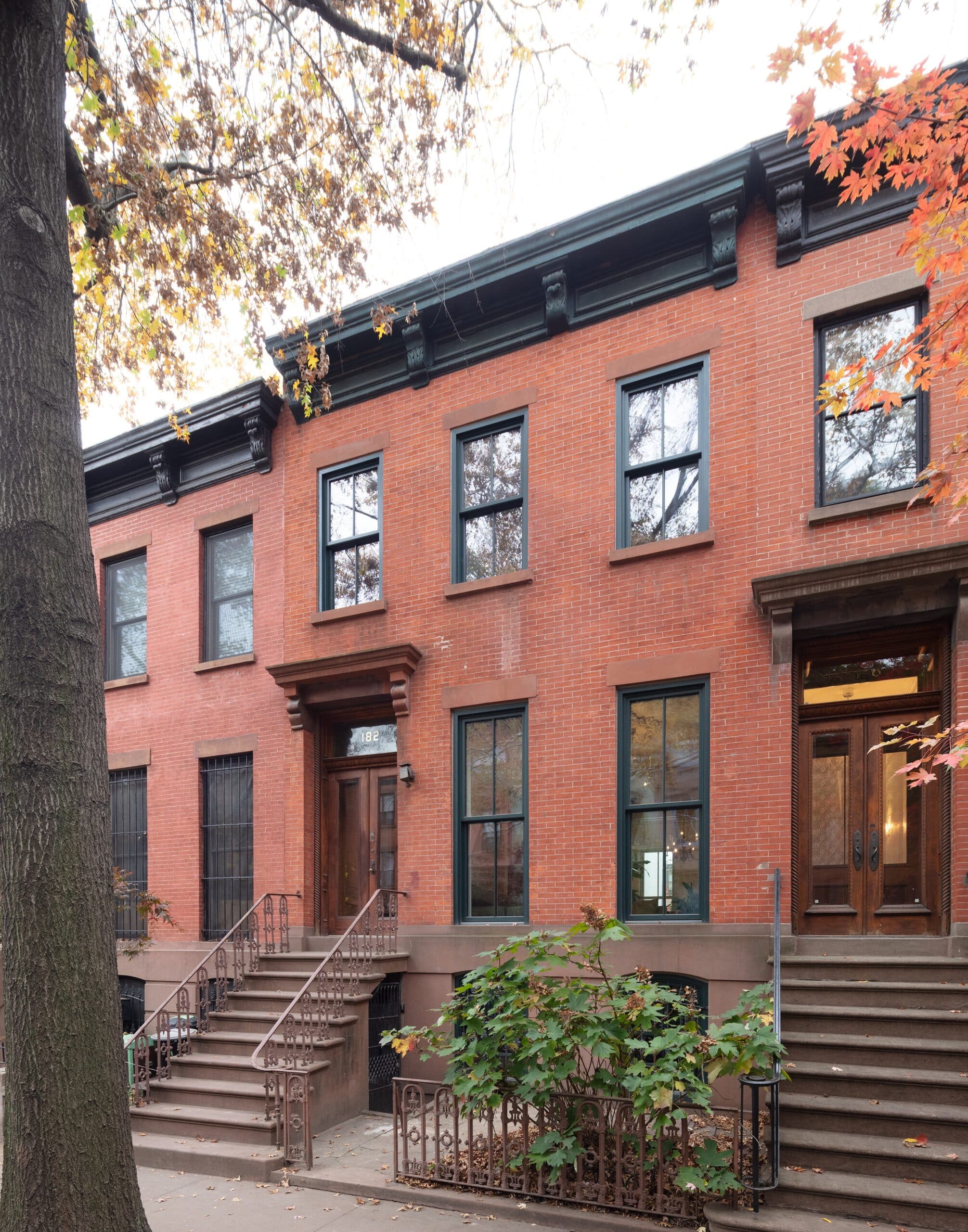
The wood frames of new triple-glazed windows from Bewiso are painted a Landmarks-approved deep green.
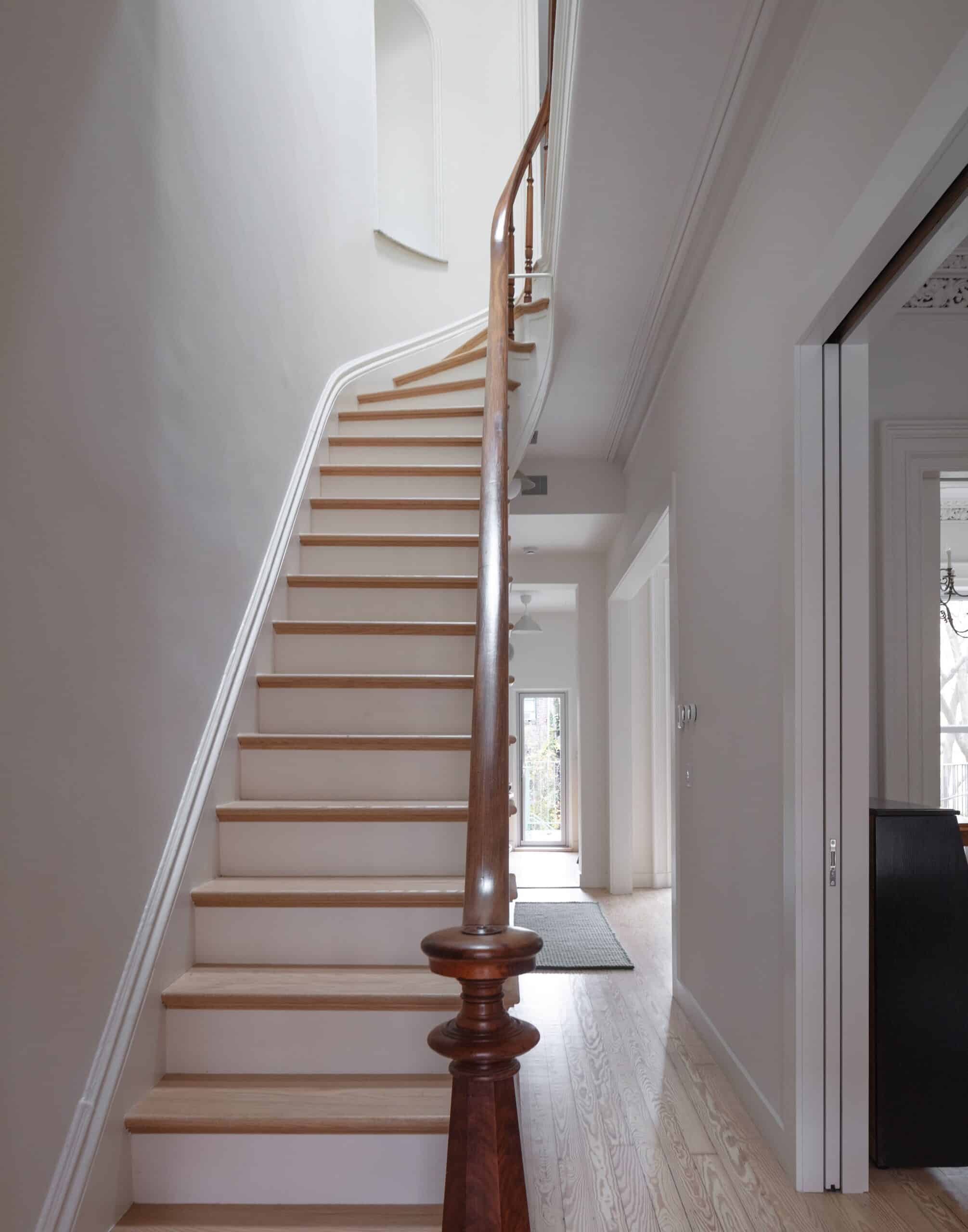
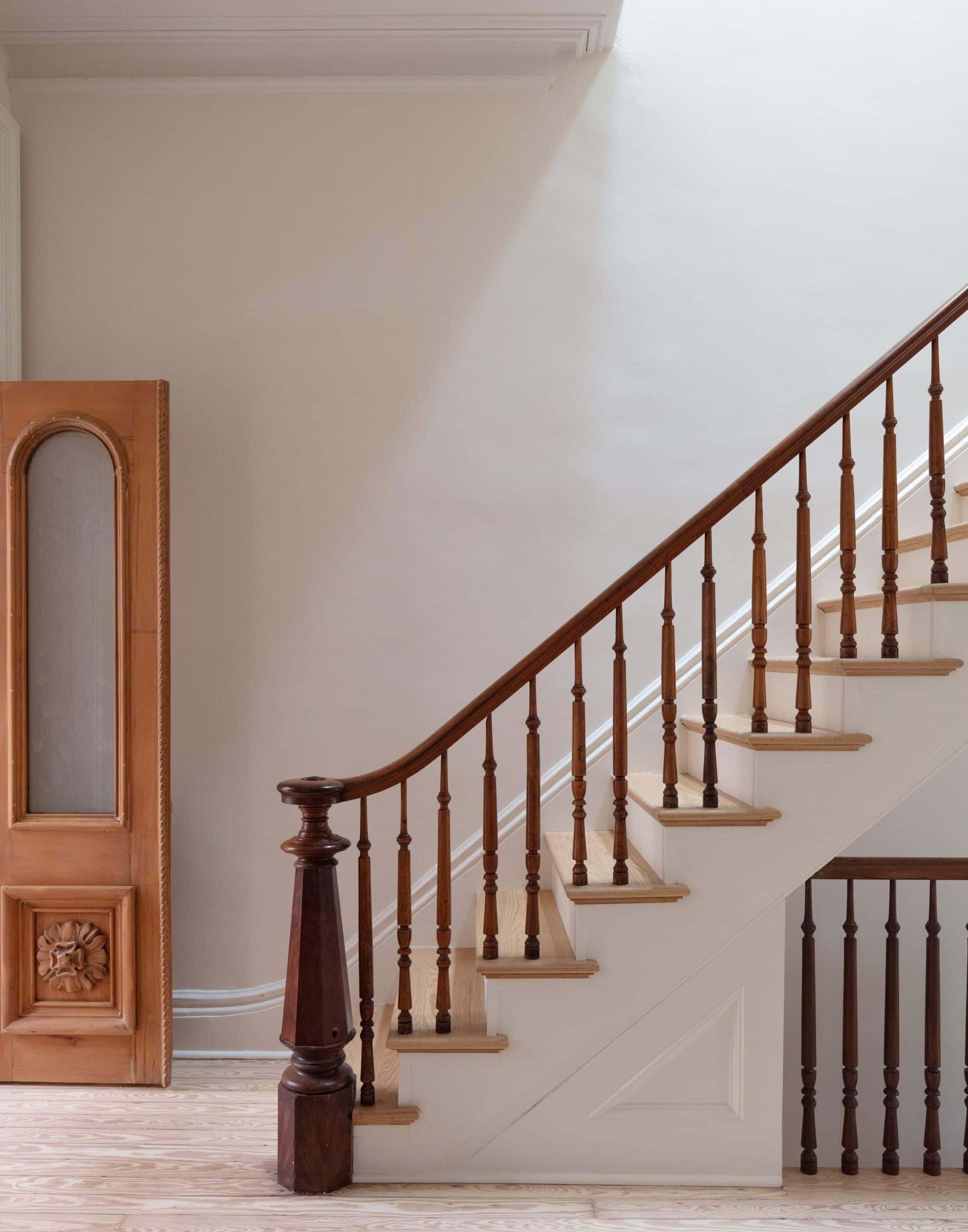
The carved vestibule doors and main stair were repaired and refinished. The old pine floors proved salvageable, requiring only sanding and finishing with zero-VOC Rubio Monocoat.
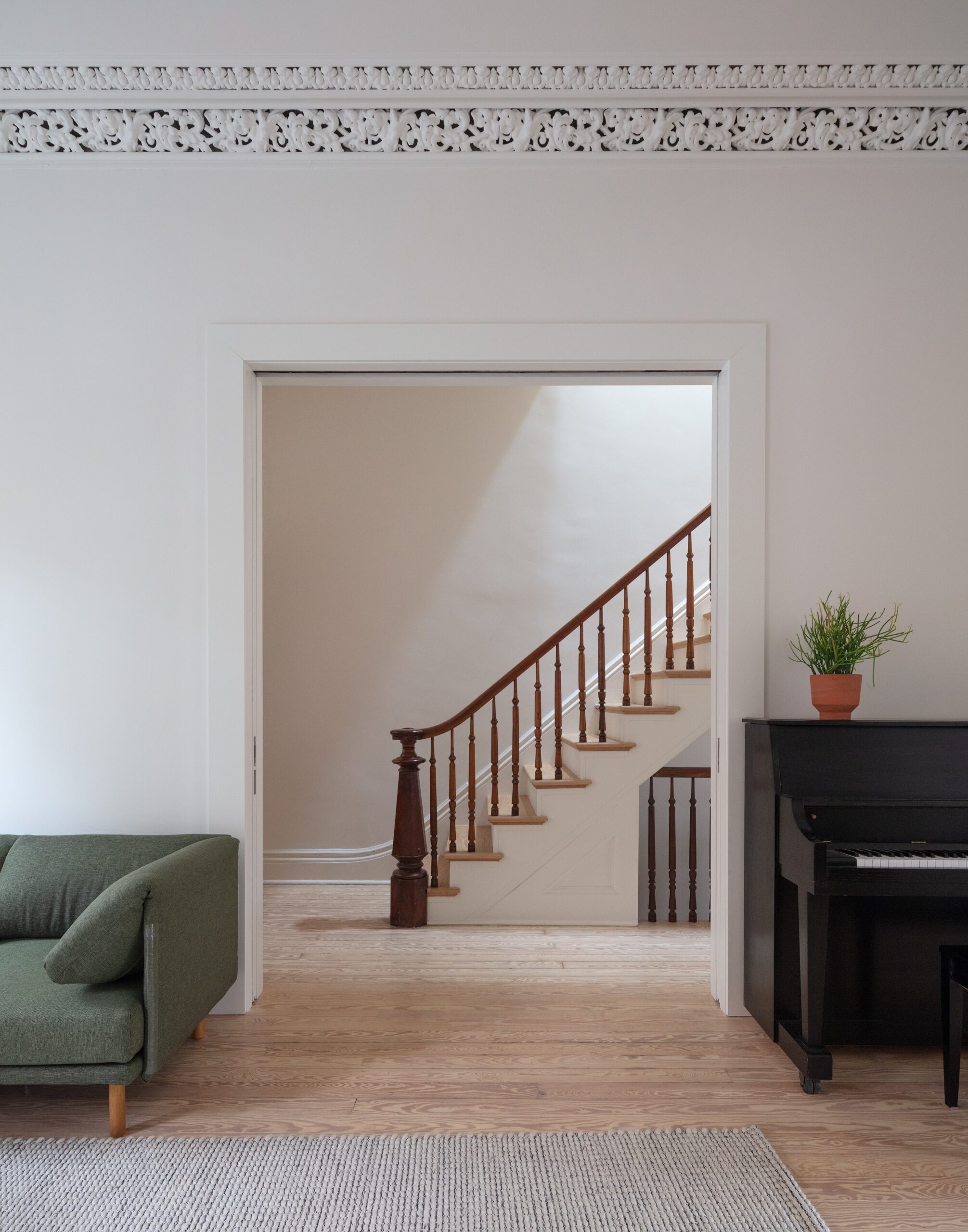
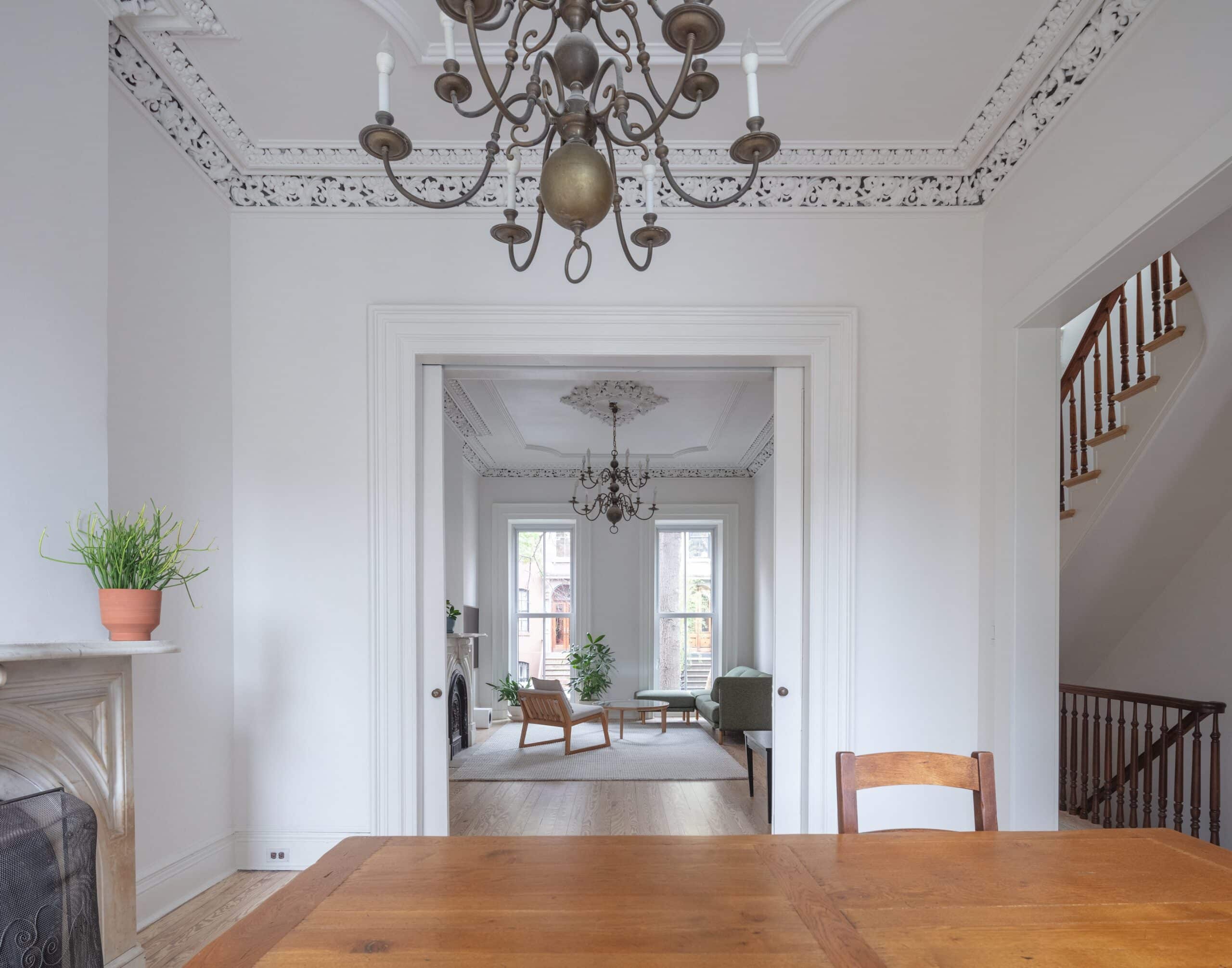
On the parlor floor, where CO Adaptive introduced wider openings between spaces, new moldings are the same width as the remaining vintage ones, but simpler in profile. “It’s nice to call out what the modern changes are — in keeping with the way the house was, but an acknowledgement that this is not the original,” Mandl said.
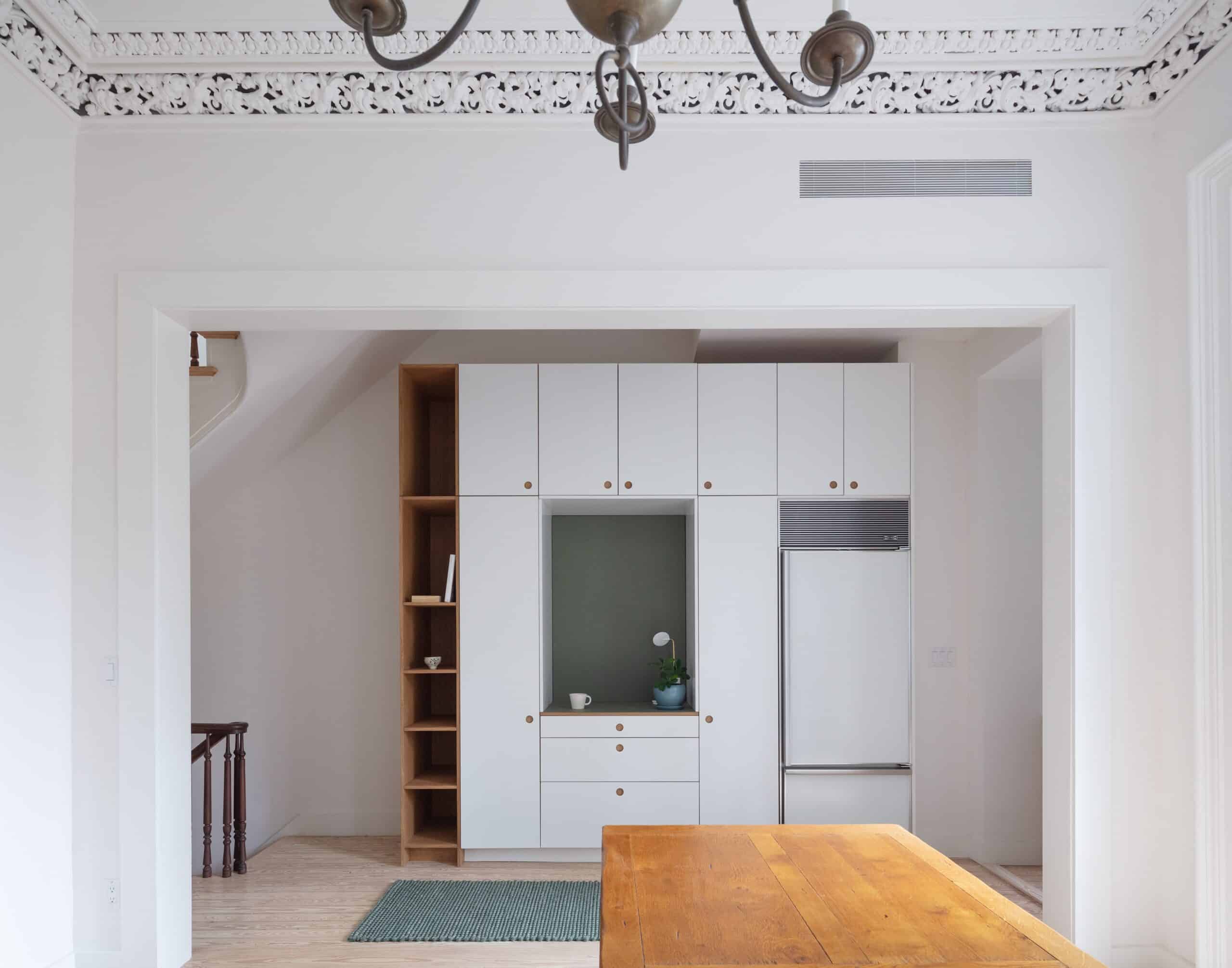
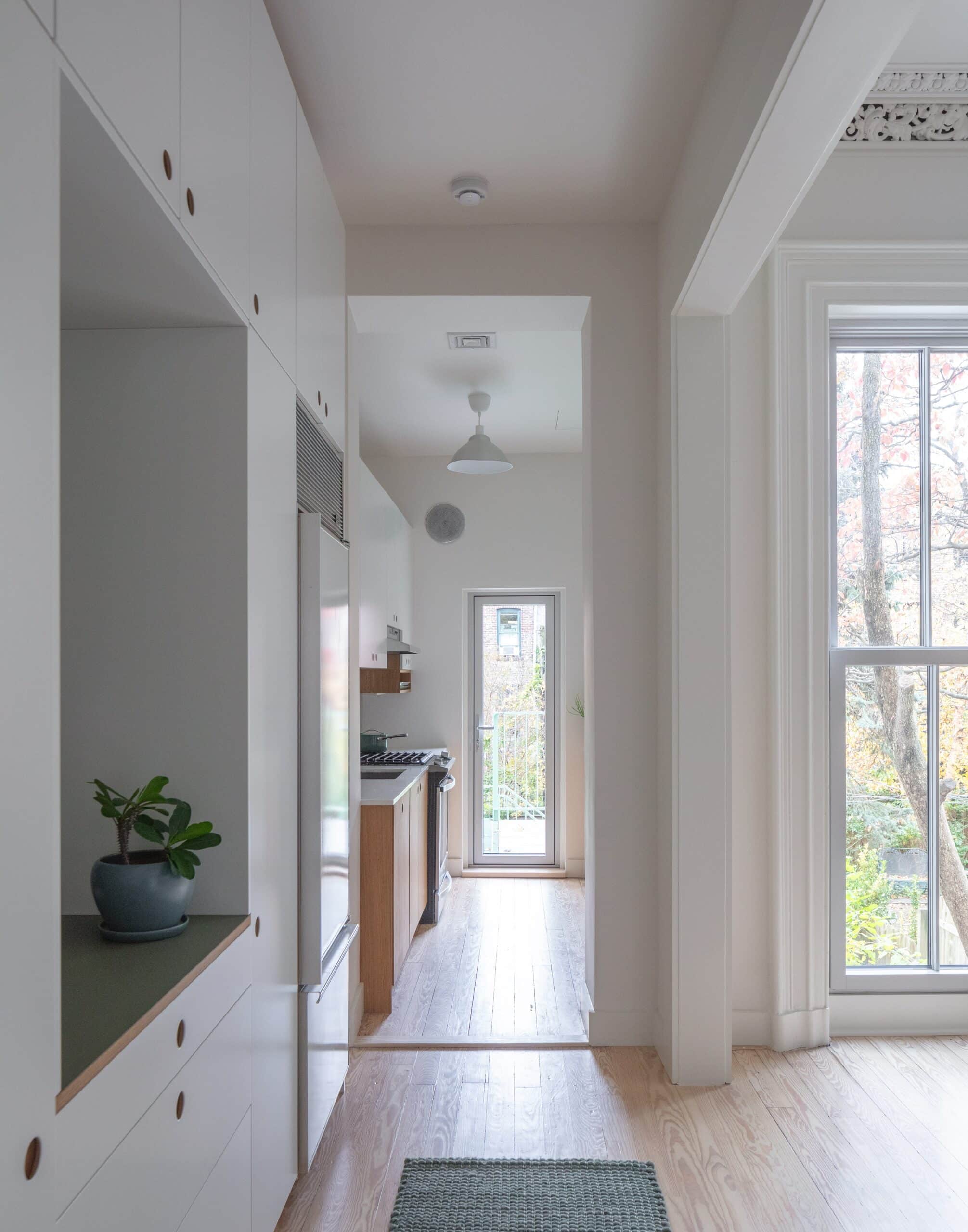
The all-new galley kitchen is located in an extension that may be as old, or nearly as old, as the house itself. For reasons of economy, it was decided to leave the kitchen essentially where it was, rather than expand it to what is now the dining room. “Moving the plumbing and appliance connections would have been costly,” Mandl said. But relocating the fridge and adding additional storage in the hall beyond the kitchen “creates additional connectivity between the kitchen and dining room,” the architect said.
Also for budget reasons, the gas stove remained, as the switch to electric heat had maxed out the house’s electrical capacity. “It would have been very expensive to upgrade the electrical service” further, Mandl explained.
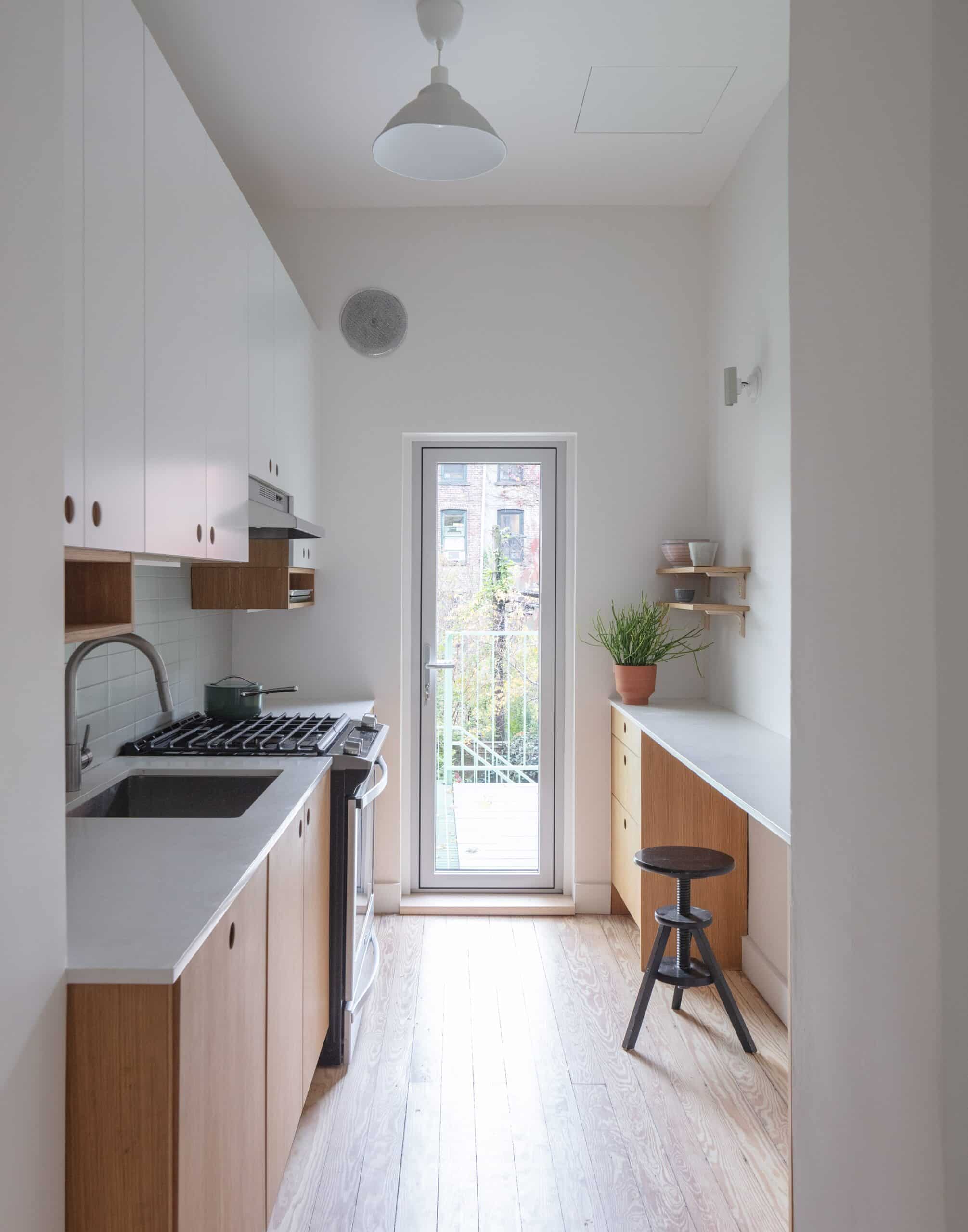
The kitchen cabinets are Reform’s Basis design, oiled oak below and painted above to match the surrounding walls.
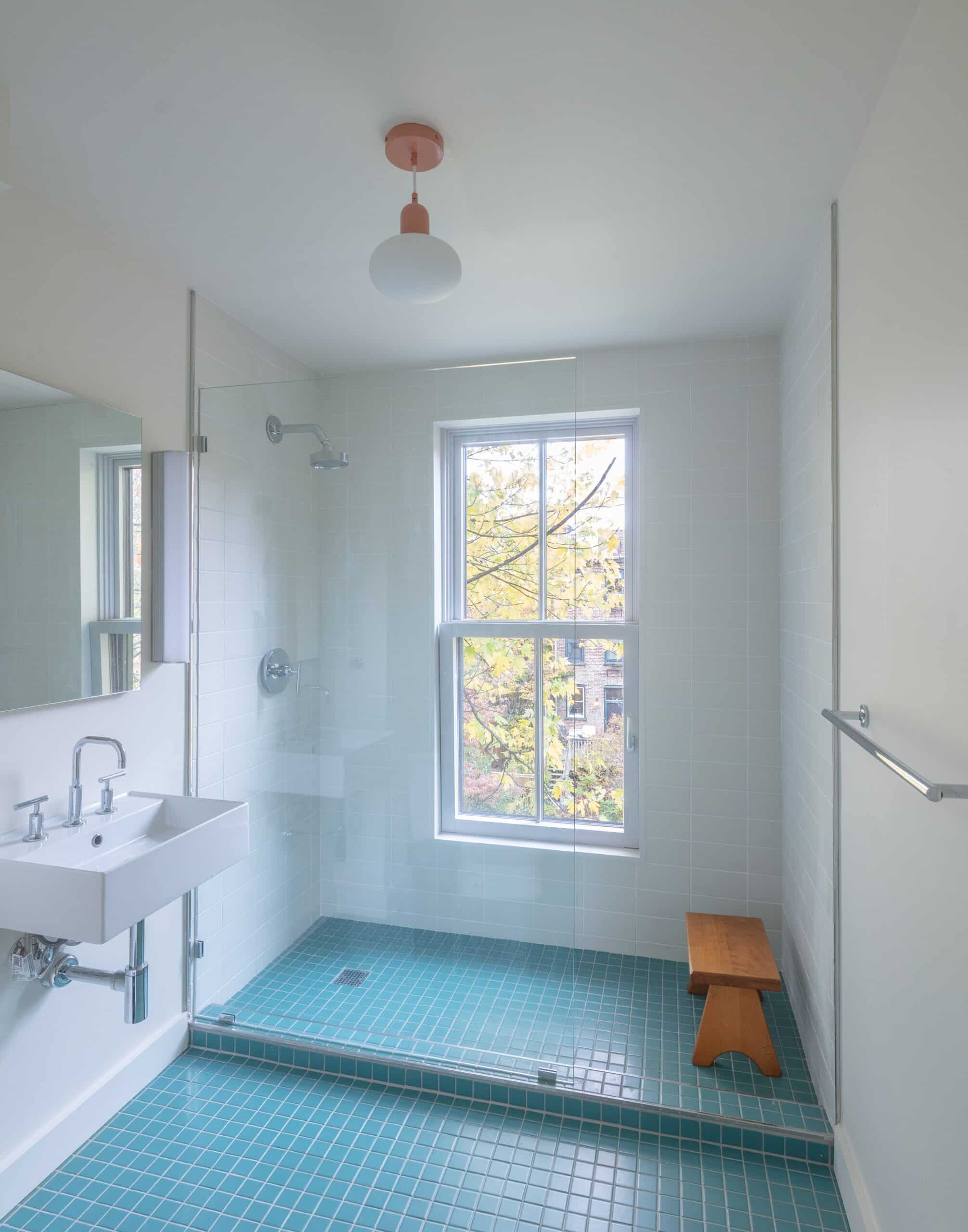
In an updated top-floor bath, turquoise floor tiles from Nemo bring a shot of color to the proceedings.


New high-performance skylights and a hatch by Lamilux amplify daylight. The old-fashioned light fixture is original to the house.

The new steel deck at the rear of the house was painted pale green, in a satin finish, and the rear facade clad with waterproof stucco.
[Photos by Naho Kubota]
The Insider is Brownstoner’s weekly in-depth look at a notable interior design/renovation project, by design journalist Cara Greenberg. Find it here every Thursday morning.
Related Stories
- The Insider: Electric Meter Runs Backwards in Stylish, Energy-Saving Bed Stuy Townhouse
- The Insider: Gut Reno Slims Energy Use in South Slope Fixer-Upper
- The Insider: Shipshape Windsor Terrace Rebuild Centers Open Plan Design, Sustainability, Function
Email tips@brownstoner.com with further comments, questions or tips. Follow Brownstoner on Twitter and Instagram, and like us on Facebook.

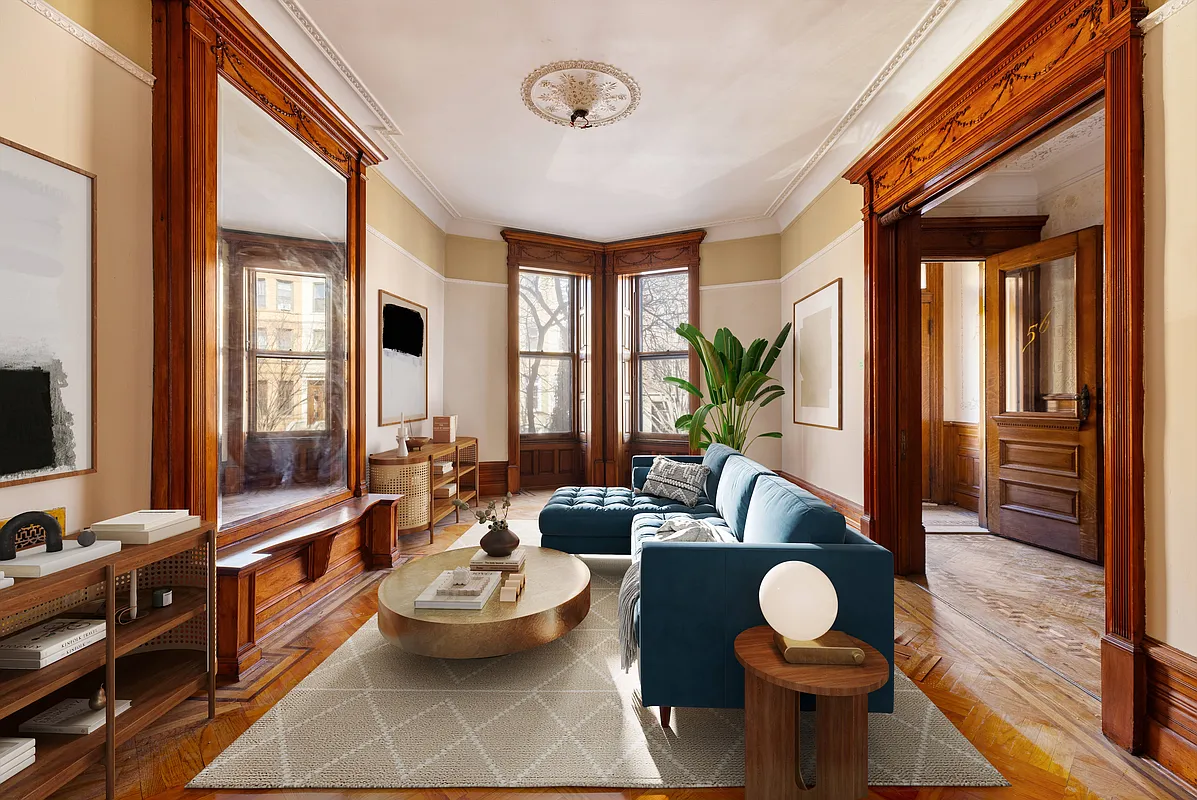
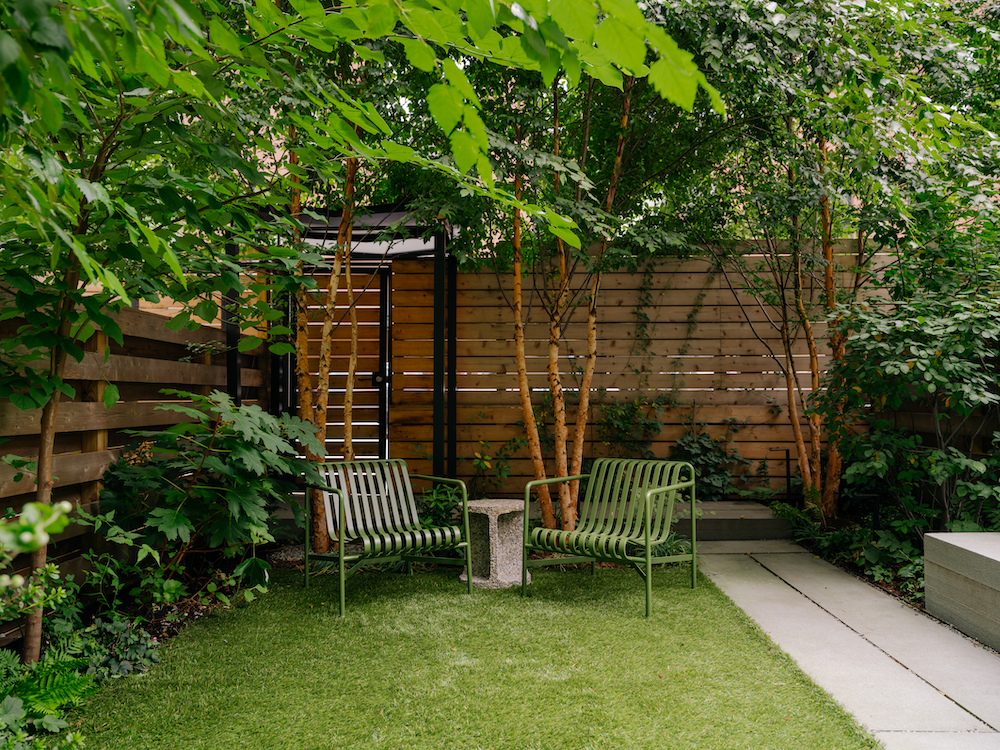
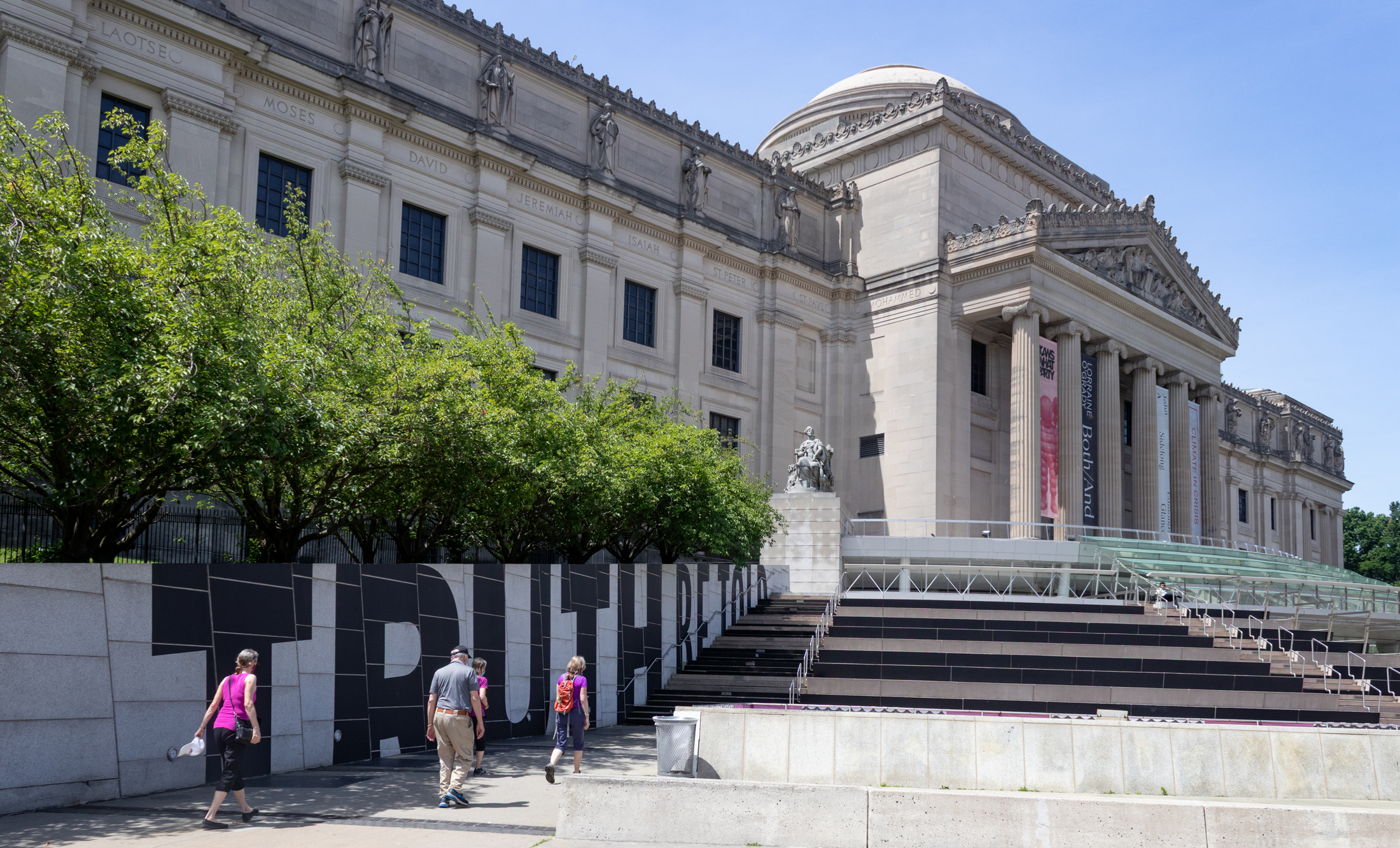





What's Your Take? Leave a Comment